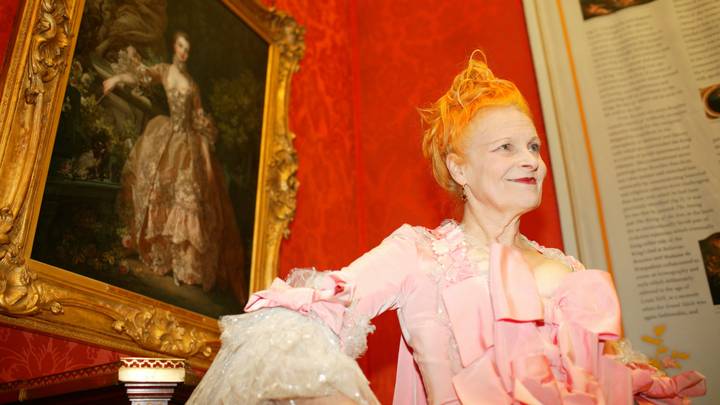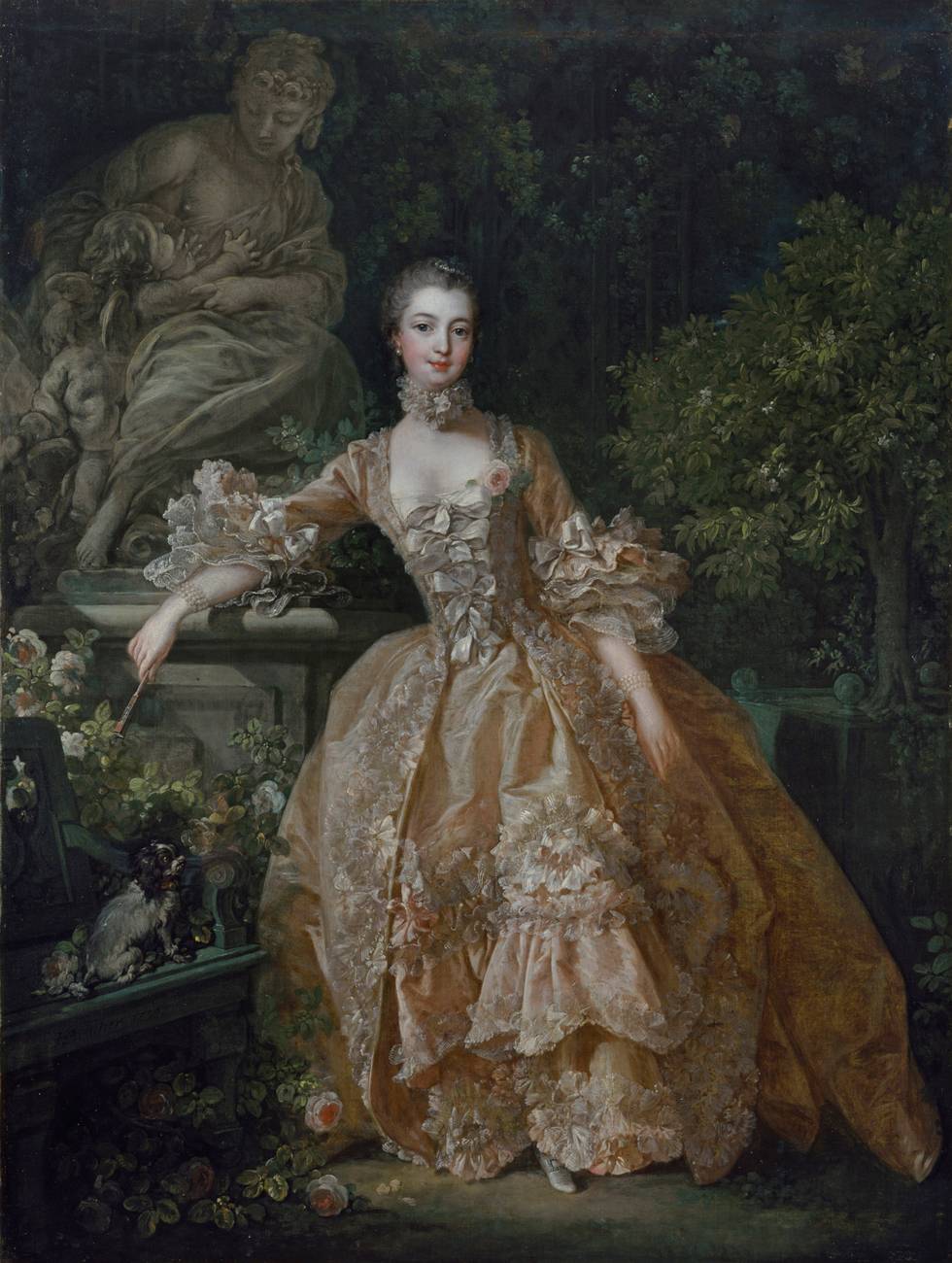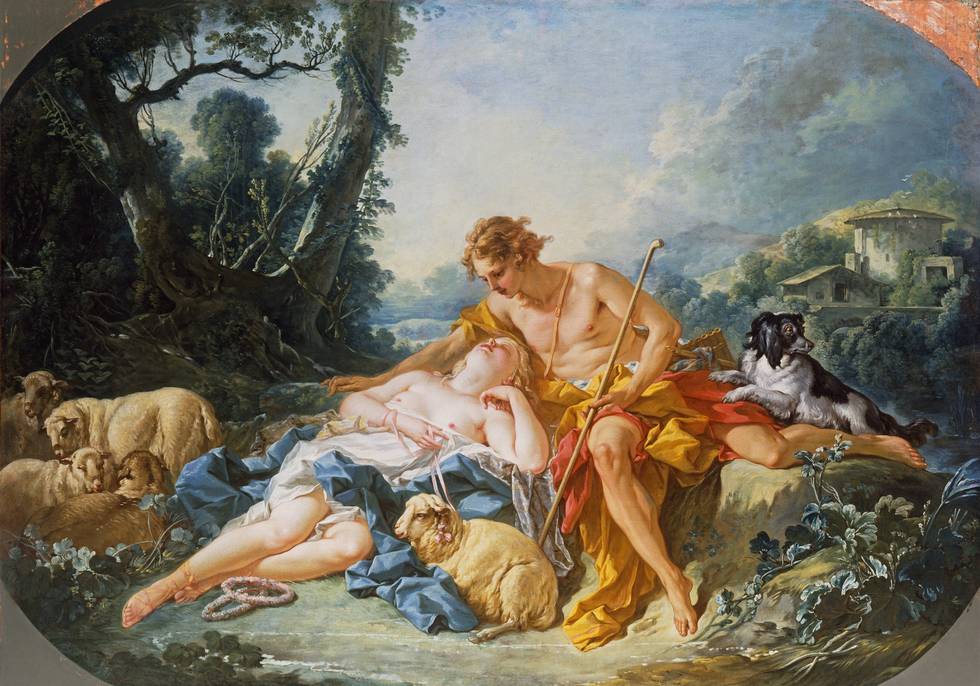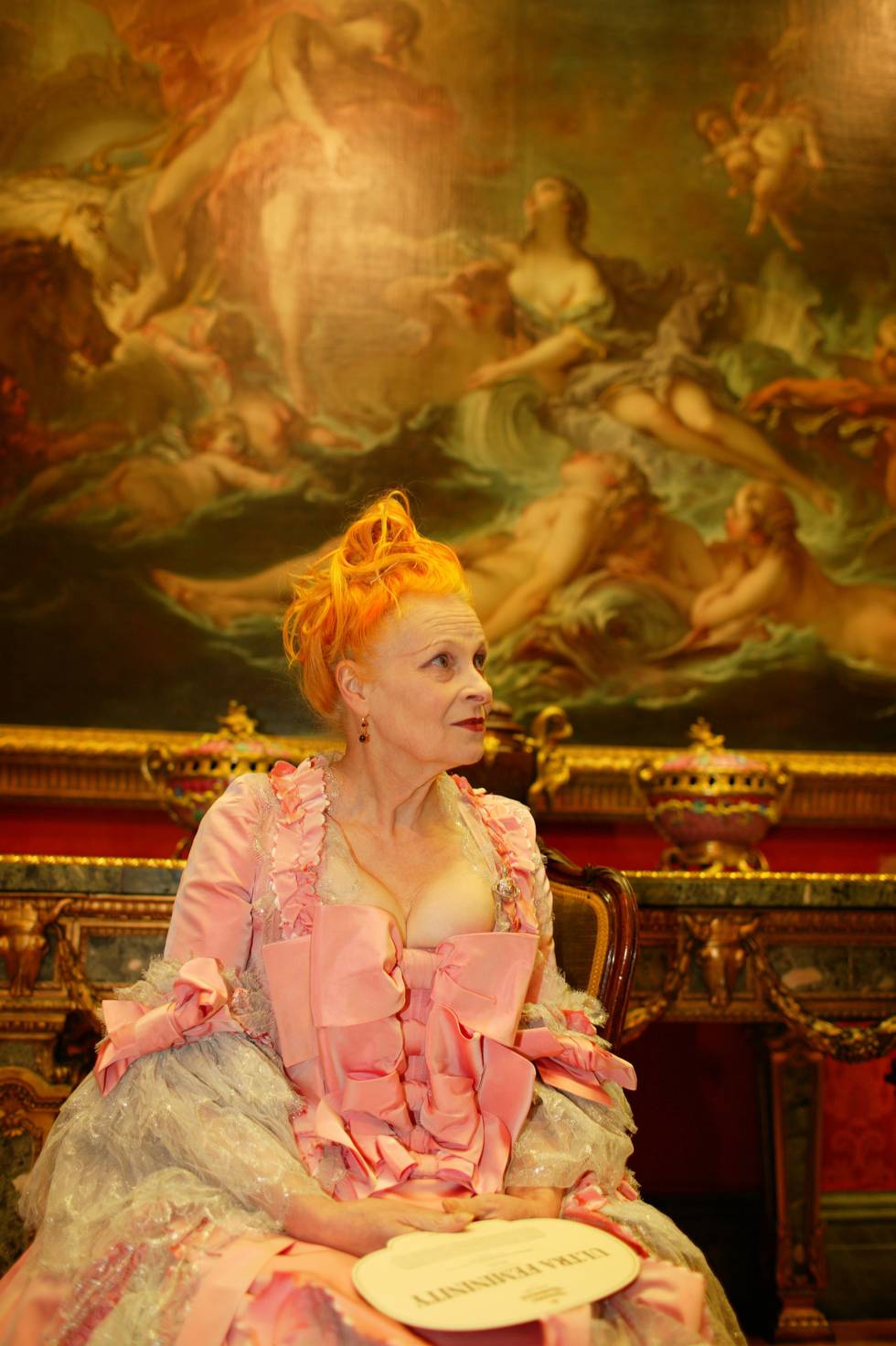François Boucher’s (1703-1770) sensuous, playful paintings typify the taste of Louis XV’s Court (r. 1715-1774). Boucher is strongly associated Madame de Pompadour (1721-1764), the king’s famous maîtress-en-titre (official mistress), whose portrait by the artist is held in the Wallace Collection (P418).
A year after Pompadour died, he was made First Painter to the King and Director of the Royal Académie of Painting and Sculpture. Boucher’s paintings carry with them strong associations of courtly decadence and privilege that seem entirely at odds with the punk ethos of British fashion designer, Vivienne Westwood (1941-2022).
In the mid 1970s, Westwood and her then partner and collaborator Malcolm McLaren designed the clothes for disenfranchised youths, who called for the abolition of monarchy in the Sex Pistols’ controversial punk anthem God Save the Queen (1977).
15 years later in 1990, Westwood reproduced details of eighteenth-century paintings and objects associated with French held in the Wallace for her Portrait collection. Among them was Boucher’s Daphnis and Chloë (P385), which she printed on corsets, ties, scarves, and t-shirts.
That image became a staple of Westwood’s iconography from then on. Indeed, that painting—a very fine, but admittedly minor decorative overdoor panel—has become one of the artist’s most famous works via Westwood.
Westwood used two further Boucher paintings in her collections in the 1990s—Hercules and Omphale and Abduction of Europa. She also borrowed Jean-Honoré Fragonard’s The Swarm of Cherubs, and more recently The Swing.
Those paintings have a shared theme of love and eroticism, whimsy and play. It was those ludic and sensual qualities that appealed to the British designer, who once commented that “fashion is eventually about becoming naked.”
The past was a source of inspiration from the very beginning for Westwood and McLaren. The first Teddy Boy clothes that they sold from their shop Let it Rock at 430 Kings Road Chelsea, in 1971 were already out of time, with the style going out of fashion in the mid 1950s.
The tartan punk bondage suits that they designed in 1976 recalled for McLaren his Scottish heritage, and for Westwood “something you might have seen at the Battle of Culloden.” The clothes for Westwood and McLaren’s “urban guerrillas” were informed by historical dress but remixed with straps and ties of the sadomasochist subculture, calculated to shock the prudish public.
Historicism and eroticism are the twin pillars of Westwood’s designs, and references to Boucher’s paintings link them together in her work.
Westwood explained why she chose to use Boucher’s Daphnis and Chlöe for her Portrait collection in a short film she recorded in 2009:
My collection that was most inspired by the Wallace Collection, was a collection called Portrait. I wanted to use the things that most epitomised paintings. And for example, I chose pearl drop earrings because I decided that was the most typical jewellery throughout the century somehow. I designed a special hat that would look just as good as someone in 1930, 1830, 1730 a sort of little trilby type thing. I wanted canvas in my collection and even more I wanted an actual photographic painting and that is when I decided to choose the Boucher, as being so typical and so pretty. I had it printed on corsets.

The designer had not sought clearance to reproduce those objects on her clothing, however. The late Dame Rosalind Savill, Director of the Wallace from 1992 to 2011, recalled seeing a picture of Jeff Koons with his wife La Cicciolina wearing a Westwood Boulle dress, prompting her to write to the designer to inform her of the breach of copyright. Westwood responded that “she had photographed it from the back of the Wallace guidebook and surely that was fine.” As Savill recalls: “although Vivienne may have broken our rules, I loved her for it and it enabled us to be so much more engaged and creative with her.”
So the museum did not pursue their claim. Instead, they persuaded the fashion house to allow them to display two signature Boucher corsets for sale in the shop. Savill only recalled one of the corsets selling to an international tourist.
That corset became one of the most important fashion designs of the twentieth century, and is now held in major museum collections across the world.
Westwood continued to be inspired by Boucher’s work throughout the 1990s. One gown from her 1995 show Vive La Cocotte (cocotte being slang for a courtesan), is inspired by the Wallace portrait of Madame de Pompadour by Boucher.
The details of Westwood’s homage closely match the painting: the graduated bows on the stomacher, open sleeves of the jacket with billowing lace below, and the trimmings on the skirts matching the Robe à la française of the portrait.
But the pastel shades of Pompadour’s dress in Boucher’s painting are exaggerated in candy pinks and blues by Westwood, accentuating courtly artifice of the gown, bringing it sharply into the present.
The homage to the original painting found its moment of perfection when Vivienne wore the Pompadour dress herself to launch the 2004 exhibition Boucher: Seductive Visions at The Wallace Collection.
This article was written by Robert Wellington, Associate Professor of Art History and Director, Centre for Art History and Art Theory at Australian National University.



